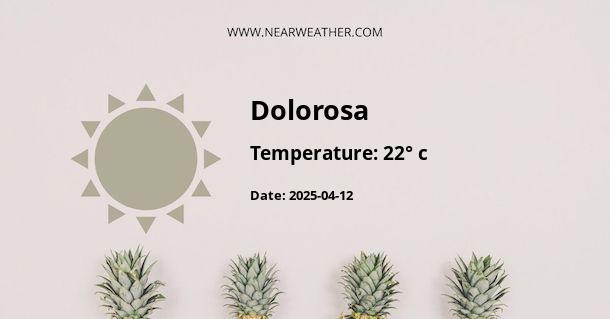Dolorosa, Bolivia: Climate and Weather Overview
Dolorosa, located in Bolivia, offers a unique climate and weather experience year-round. Understanding the weather patterns and climate of Dolorosa is essential for anyone planning to visit or settle in this region. In this guide, we'll explore the climate, average temperatures, precipitation, and other important weather-related factors in Dolorosa to provide a comprehensive understanding of what to expect throughout the year.
Climate of Dolorosa
Dolorosa experiences a semi-arid climate, characterized by relatively low annual precipitation and a large temperature range between day and night. The region also encounters distinct wet and dry seasons, which significantly influence the overall climate of the area.
The wet season typically occurs from November to March, bringing increased precipitation and higher humidity levels. In contrast, the dry season usually spans from April to October, with significantly lower precipitation and drier conditions.
Average Temperatures
Throughout the year, Dolorosa experiences a wide range of temperatures, with distinct variations between the day and night. The following table outlines the average monthly temperatures in Dolorosa:
| Month | Average High (°C) | Average Low (°C) |
|---|---|---|
| January | 28 | 15 |
| February | 27 | 15 |
| March | 26 | 14 |
| April | 25 | 13 |
| May | 23 | 11 |
| June | 21 | 10 |
| July | 21 | 10 |
| August | 23 | 11 |
| September | 25 | 12 |
| October | 26 | 13 |
| November | 27 | 14 |
| December | 28 | 15 |
As shown in the table, Dolorosa experiences warm to hot temperatures during the day and cooler temperatures at night throughout the year. Visitors and residents should be prepared for these temperature fluctuations and pack accordingly for their time in Dolorosa.
Precipitation
Precipitation in Dolorosa is heavily influenced by the region's wet and dry seasons. The following table provides a breakdown of the average monthly precipitation levels in Dolorosa:
| Month | Precipitation (mm) |
|---|---|
| January | 120 |
| February | 100 |
| March | 90 |
| April | 50 |
| May | 20 |
| June | 10 |
| July | 10 |
| August | 10 |
| September | 20 |
| October | 40 |
| November | 70 |
| December | 100 |
From the table, it is evident that the wet season, typically from January to March, experiences the highest precipitation levels, while the dry season, from April to October, sees significantly lower amounts of rainfall. Understanding this pattern is essential for planning outdoor activities and travel arrangements in Dolorosa.
Conclusion
In conclusion, Dolorosa, Bolivia, offers a semi-arid climate with distinct wet and dry seasons, significant temperature variations between day and night, and varying precipitation levels throughout the year. Visitors and residents should consider these factors when planning their activities and packing for their time in Dolorosa. By understanding the climate and weather patterns, individuals can make the most of their experience in this unique region of Bolivia.
A - Dolorosa's Latitude is -16.233330 & Longitude is -62.433331.
A - Weather in Dolorosa is 22° today.
A - Climate Conditions in Dolorosa shows overcast clouds today.
A - Humidity in Dolorosa is 90% today.
A - Wind speed in Dolorosa is 12.17 km/h, flowing at 354° wind direction. today.
